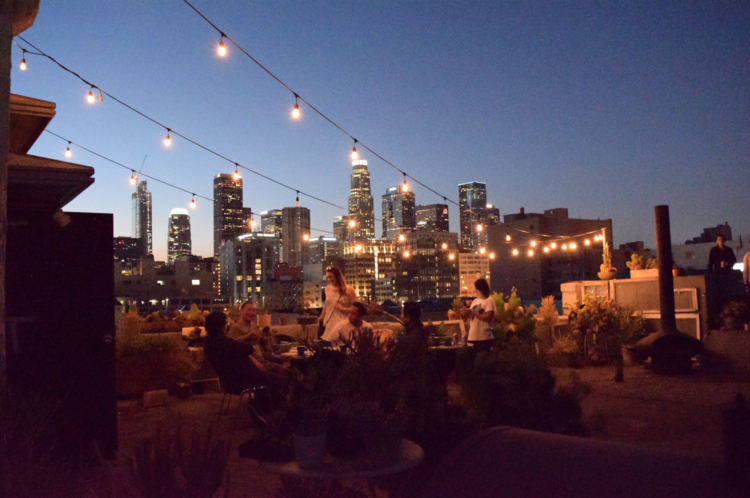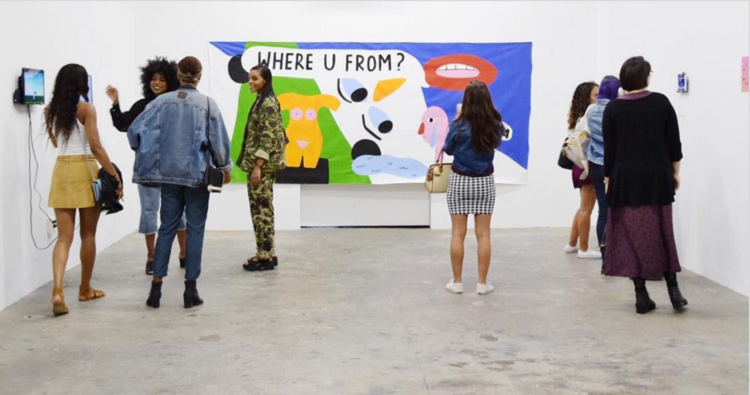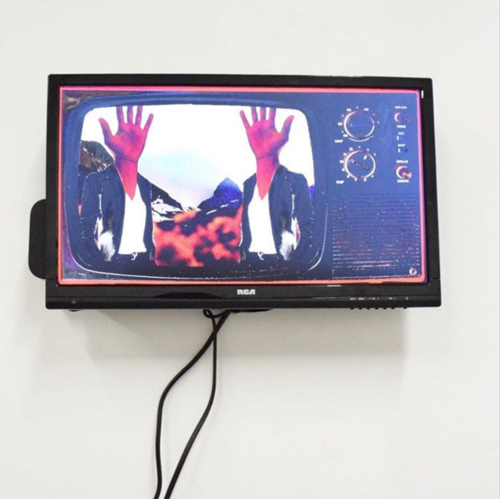
Gabriella Sanchez: the mind behind Wayside LA’s inclusive grassroots art space
Jessica Cole
16 Nov 2016
Nestled in the centre of Downtown Los Angeles, Wayside gallery is situated in a residential block that peers over the infamous Skid Row. The gallery was sown by artist and commercial illustrator Gabriella Sanchez who wanted to fully utilise her personal space, opening it up to art events and shows that can flourish within the building’s vast white halls and sweeping rooftop balcony. The gallery was founded with the ethos of growing and promoting work by “all marginalised voices with a specific focus on women of colour”.
Wayside’s first show, Girls Who Dance in Dissonance, debuted in August and featured the work of 10 women of colour artists. I was immediately taken aback by how organically the conversation flowed between complete strangers, the atmosphere heady with a raw energy that wasn’t petered with the usual white cube pretentiousness. After conversing with Gabriella over Skype, I would later learn that this was probably down to the 28-year-old’s curation which she had cultivated online. “I don’t want it to feel intimidating or feel that you have to have a certain level of education to come in here,” she explained.
The entire curation of the show bloomed out of a social media conversation between Gabriella and the New York based artist Tyra Mitchell. “We had found each other over social media before and we had stayed in touch. When she came out for the show that was the first time I actually met her in person.” Using Instagram, Gabriella cherry picked an eclectic range of artists from near and abroad, having spent “days and days looking up women artists of colour”.
“It was a really interesting experience because I would see work and be like, ‘this is awesome’, then I would see her picture and be like, ‘is this a person of colour?’ Some weird questions would then follow.” The fruition of this approach produced a raw intimacy at the show. We were all strangers, gathered to share and explore the thematics of race and gender. The exhibition spread its roots out underneath and cracked through the concrete block of race narrative, drawing out individual perspectives and experiences. Out of this blossomed a vibrant bouquet of “materials that displayed the complex, individual and even contradictory natures between a collection of women of colour.” With each artist’s response, be it through installations, zines, video or clothing, flourishing in its own individual voice and sense of self.
Standing on S. San Pedro St, Wayside is unassuming amongst the beaten down shop fronts and thick canopy of nylon tents that line LA’s infamous Skid Row. “For a long time I have been thinking about the idea that art should be for everyone, I personally wasn’t exposed to art, I literally had no idea contemporary art was a thing until college, my family never went to art galleries. One you had to pay to get in there, two it feels alienating if you don’t have any entry way into there,” Gabriella mentions.
From the rooftop of Wayside the huddled glow of the financial district’s sky scrapers peer down and in the distance, the giant art warehouse of Hauser and Wirth unwaveringly stare back. Developers eyes bulge at the lucrative potential of gentrification. The homeless of Skid Row are an acrid anthesis to the wealth that densely masks the surrounding area. “It is also really important to me that everyone can be exposed to art. So specifically in this space it has made me think a lot more about this and because of our location. There are so many homeless people around here and so I have been thinking of ways to try and merge the two.”
Skid Row is the most densely populated district of homeless people in the whole of the United States, with an estimated homeless populace of between 3,000 – 6,000 people. It is quickly becoming a space which is diminishing despite a rapidly increasing homeless population, with developers having silently encroached on already 10 square blocks in recent years. The fact that Los Angles still has a Skid Row in the 21st century, highlights how society, still, chooses to ignore and alienate those in the margin lines. “One idea that I had softly spoken to people about is to have a show put on in the gallery, and than setting up some form of temporary gallery along the walls of Skid Row, or taking over bus stop signs.” The gallery’s approach is one of reaching out to marginalised people, communities and areas, through encouragement not force. “There is so much to consider and think about, I don’t want to rush into the project, to then miss something out or alienate people further.”
As politicians such as Donald Trump have ripped up the rug from beneath the feet of mainstream neo-liberal politics, drawing the backyard chat out onto the front lawn, the space for marginalised voices to speak up and out, could not be more needed. Wayside uses the medium of art to further the branches of discourse in race, gender and the individual. These fragmentations of societies makeup, which are so intrinsically intertwined with contemporary politics, provide the nutrients for creative intuition and artistic voice. “Racial tensions have always been high in this country, Trump is the fuel to that flame. On the flip side you have to consider that however much he has brought out all of the hidden ignorance, he has also bolstered a lot of people who are being spoken about in his speeches,” Gabriella says. The fluidity of Wayside gives room for these individual perspective to flow from private concerns into the public sphere. “I will not just let it go because it is just too much, because the way they are thinking and feel about issues has a huge affect on people of colour. People are now speaking out against these ignorant prejudices, because of frustration or out of unity, you see other people doing it and your thinking ok, I see other people doing this and I need to be a part of it.”
Wayside not only seeks to challenge the foundations of perceived ethnic and gendered voice, but also the very tenant of what an art space is meant to be. Alongside the planned pop up events and weekend flash art-shows, the space also host open dinners, where “we get long tables and discuss a topic that retains to art, so we all sit around, eat and shoot shit about this like ‘does the artists have a social obligation and if so what is it?’” The most recent dinner held by the gallery in collaboration with the LA based feminist art collective, Honey Power, was an intimate event of first come 20 people, set around the rooftop’s fire pit. “It was really nice, it felt like a conversation between friends which is exactly how we wanted it to feel.”
The political landscape of both Britain and America has thundered with racism and sexism in recent months. The backlash has been for the rise of rights movements such as the #BlackLivesMatter campaign and, as Gabriella comments, “people now speaking out in an act of unity”. Wayside uses art to engage with a broader more inclusive dialogue between these individual voices that have been ostracised so publicly by segments of society. The space is embedding through these open dinner discussions, art shows and social media outreaches the crucial movement of social discourse at its very grassroots.











